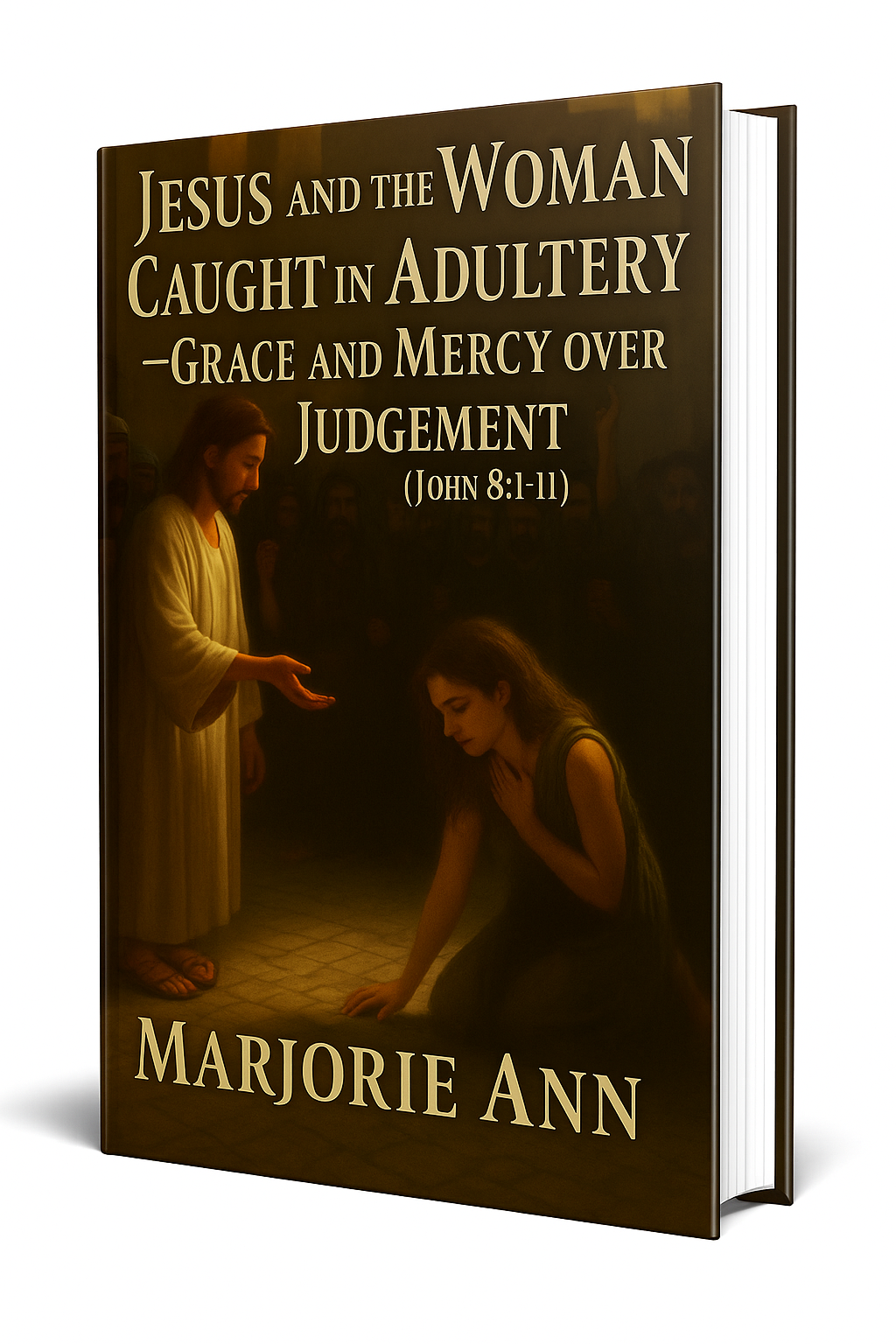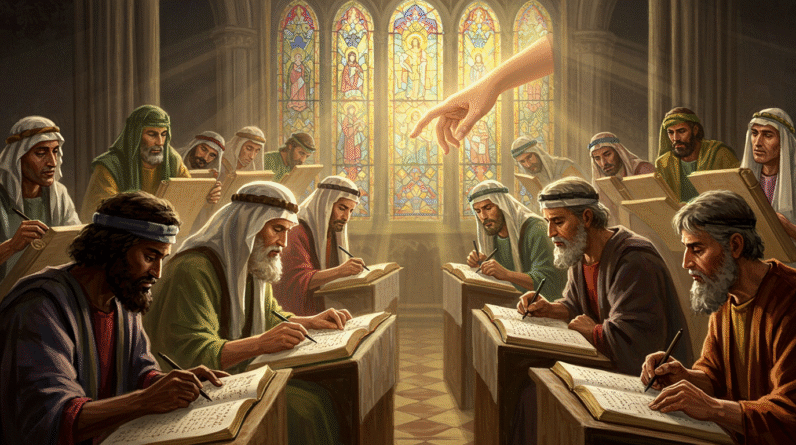How The Old And New Testaments Were Written
You may have asked, at some point, “How was the Bible written?” It’s a question that reaches to the heart of your faith and to the reason you turn to Scripture for guidance. You want to know not only who penned the words you read, but how those words came into being, how they were preserved, and how they came to be gathered into the Bible as you hold or read it today. In a world of shifting opinions and complex scholarship, you need a clear, compassionate explanation that honors both faith and evidence. In the paragraphs that follow, you’ll find a careful, pastoral walkthrough of the history, the processes, and the convictions behind how the Old and New Testaments were written and preserved.
How was the Bible written: the claim of divine inspiration
When you ask “How was the Bible written?” you must start with the Bible’s own claim about itself. Scripture affirms that its words are not merely human opinion but are rooted in God’s revelation to people who listened and recorded. Paul tells you plainly: “All Scripture is God-breathed and is useful for teaching, rebuking, correcting and training in righteousness” (2 Timothy 3:16). Peter reinforces this when he explains that prophetic messages came not from human will but from people carried along by the Holy Spirit (2 Peter 1:20-21). These claims don’t erase the human element; rather, they place human writing under divine guidance.
You should understand that inspiration, as the Bible presents it, is not a mechanical process where God forces a pen into an author’s hand. Instead, inspiration means God used real people—with real personalities, vocabularies, and contexts—to convey His truth. The result is a library of books that speak in many voices yet harmonize in one divine story—the story of creation, fall, redemption, and restoration.
What does inspiration mean to you?
When you ask, “How was the Bible written?” and hear that it is inspired, you get a comforting truth: the Scriptures are trustworthy for faith and practice. Inspiration safeguards the Bible’s message on matters essential to salvation and godly living. At the same time, you’ll find different literary genres—poetry, history, prophecy, gospel, letter—each requiring you to read with ears for the writer’s purpose. The promise of inspiration tells you that, in all these forms, God’s message comes through.
The human authors and their roles
You will encounter many human hands in the Bible: Moses, David, Isaiah, Jeremiah, Matthew, Luke, Paul, John, and others. The Bible itself points to specific acts of writing—Moses recording divine commands (Exodus 17:14), Jeremiah being told, “Write down all the words I have spoken to you” (Jeremiah 30:2), and Luke describing his careful investigation for an orderly account (Luke 1:1-4). These passages show that human authors were not passive instruments; they were responsible writers who labored to record what God revealed.
How the Old Testament was written
When you focus on “How was the Bible written” concerning the Old Testament, you’re looking at centuries of receiving, remembering, and recording God’s dealings with His people. The Old Testament emerged over many generations and includes law, history, poetry, and prophecy. It carries the layered voices of patriarchs, priests, prophets, and scribes, each contributing to the unfolding revelation given to Israel.
Oral tradition and early records
Long before many books took their final written form, stories and teachings were passed down orally. You need to picture families and tribes reciting foundational events: God’s covenant with Abraham, deliverance from Egypt, and the giving of the law at Sinai. Oral tradition was a living memory, retold around campfires and in assemblies, shaping Israel’s identity. Over time, memory found a more permanent home in written records—royal annals, temple archives, genealogies, and instructional collections.
Moses and the Pentateuch
If you ask, “How was the Bible written?” you’ll find Moses at the heart of the Old Testament’s earliest written strata. Moses is traditionally credited with writing the Torah—the first five books—because Scripture itself testifies to his recording of the law and events (Deuteronomy 31:24). Passages like Exodus 17:14, where the Lord commands Moses to “Write this on a scroll as something to be remembered,” show a direct interplay between divine instruction and human documentation (Exodus 17:14). You should appreciate that the Pentateuch preserves foundational teachings and narratives that would shape Israel’s covenant identity.
The Prophets and the Writings
Prophets were not merely predictors of the future but messengers who heard God’s word and conveyed it to the people. Jeremiah, for instance, received direct commands to write down the words God gave him (Jeremiah 30:2). Isaiah’s prophecies, the Psalms of David, the wisdom sayings of Solomon, and the historical records of kingship were written across centuries. Each book reflects a context—exile, restoration, judgment, hope—and preserves God’s dealings with His people.
Scribes, copying, and preservation
You’ll find that careful scribes played a crucial role in preserving Scripture. Copying was meticulous work: scribes counted letters, preserved vowel markings, and developed conventions to keep texts accurate. The psalmist’s confidence in God’s enduring word is an ancient witness: “The grass withers and the flowers fall, but the word of our God endures forever” (Isaiah 40:8). These scribal efforts culminated in the Masoretic Text—an authoritative Hebrew text carefully preserved by Jewish scholars known as the Masoretes between the 7th and 10th centuries AD.
The Masoretic Text and the Dead Sea Scrolls
As you trace “How was the Bible written,” you will encounter the Masoretic Text (MT) and the Dead Sea Scrolls as central pieces of evidence. The MT became the standard Hebrew text of the Jewish Scriptures. When the Dead Sea Scrolls were discovered in the mid-20th century, they included manuscripts of many Old Testament books dating as early as the 3rd century BC, providing a window into the textual tradition centuries older than the Masoretes. These scrolls confirm both the stability and the variety present in the textual transmission of the Old Testament, reassuring you that God’s Word was preserved across generations.
The Septuagint and early translations
Translation itself became a part of the Bible’s story. The Septuagint, a Greek translation of Hebrew Scriptures made in the centuries before Christ, served Jews of the Diaspora and later became widely used by early Christians. You should see translation not as dilution but as transmission—carrying God’s revelation into different linguistic and cultural contexts so more people could hear Scripture’s voice.

How the New Testament was written
When you ask “How was the Bible written” regarding the New Testament, you step into a world of eyewitness testimony, apostolic preaching, letters written to congregations, and early Christian communities preserving the life and teaching of Jesus. The New Testament grew out of the resurrection-centered proclamation of Jesus Christ and the need to instruct and correct the rapidly growing churches.
Eyewitness testimony and oral tradition
You should remember that much of the New Testament’s content began as eyewitness testimony circulated verbally. The apostles and early disciples preached the risen Christ and rehearsed the facts of His life, death, and resurrection. Paul summarizes the core of the gospel as something he received and then passed on: “Christ died for our sins… he appeared to Cephas, and then to the Twelve” (1 Corinthians 15:3-5). Luke explains that many eyewitnesses and ministers of the word provided material for his orderly account (Luke 1:1-4). Oral tradition was not unreliable rumor; it was a careful handing down of testimony by those who had seen and heard.
The Gospels: Matthew, Mark, Luke, John
The four Gospels record the life, teachings, death, and resurrection of Jesus. They reflect different audiences and theological emphases but converge on the core truth of Christ’s person and work. You’ll notice differences in detail between them because each writer shapes testimony for his readers—Matthew for a Jewish audience, Mark with concise urgency, Luke as a careful historian for Gentile readers, and John with a theological gaze into Christ’s identity. John’s own testimony asserts his role as a witness: “This is the disciple who testifies to these things and who wrote them down” (John 21:24). The Gospels were written with the intent to preserve the apostolic witness and to foster faith in Jesus as the Christ.
Paul’s letters and the epistles
The earliest New Testament writings are Paul’s letters, written to churches he planted across the Mediterranean. When you ask, “How was the Bible written?” you’ll see that letters were practical tools—addressing doctrine, ethics, and church order. Paul sometimes wrote from prison, sometimes with urgent pastoral zeal, but always with apostolic authority: “Paul, a servant of Christ Jesus, called to be an apostle…” (Romans 1:1). Early churches treasured these letters, reading them aloud and preserving them for instruction; Peter even calls Paul’s letters “Scripture” in the same breath as the other Scriptures (2 Peter 3:15-16), showing how quickly apostolic letters gained authoritative status.
Early Christian communities and collections
Christian communities collected writings that guided their worship and doctrine. You should picture congregations copying letters, circulating them to neighboring churches, and integrating Gospels and apostolic writings into their life together. Acts describes the early church’s devotion to teaching and fellowship, showing a community hungry for God’s word and faithful in preserving it (Acts 2:42). Over time, these collections formed the nucleus of the New Testament.
Criteria for canonization
As you consider “How was the Bible written,” you’ll realize the canon—the official list of books regarded as Scripture—didn’t appear overnight but emerged from criteria trusted by the church. Four main tests guided recognition: apostolic origin (Was it written by an apostle or someone related to an apostle?), orthodoxy (Did it accord with the rule of faith?), catholicity (Was it widely used in churches?), and antiquity (Was it early enough to be reliably apostolic?). These practical tests helped churches discern which writings genuinely carried apostolic authority.
The formal recognition of the New Testament canon
Formal recognition came gradually. By the fourth century, church leaders and councils began listing authoritative books. Athanasius’ Festal Letter (AD 367) provided a list of 27 books that matches your New Testament today. Regional councils such as Hippo and Carthage affirmed similar lists. Revelation’s stern warning about adding or subtracting words—“If anyone adds to them, God will add to him the plagues described in this book” (Revelation 22:18-19)—expresses the seriousness with which early Christians guarded Scripture. In the end, the church recognized what the Spirit had already confirmed by use, reception, and harmony with the apostolic witness.
The process of transmission and textual criticism
Even after books were written and collected, the question “How was the Bible written?” continues into how those books were copied, transmitted, and reconstructed. You live with a massive textual inheritance that required centuries of careful copying and, later, scholarly recovery.
Manuscript evidence: papyri, uncials, and more
The New Testament survives in thousands of Greek manuscripts—ranging from early papyrus fragments (as early as the 2nd century) to later uncials and minuscules. The Old Testament survives in Hebrew manuscripts like the Masoretic Text and in translations such as the Septuagint (Greek) and the Syriac Peshitta. Discoveries like the Dead Sea Scrolls and early New Testament papyri give you a more secure picture of how texts circulated. The sheer volume of manuscripts provides a rich base for scholars to compare and reconstruct the original wording.
Comparing manuscripts and reconstructing the text
Textual criticism is the careful science of comparing manuscripts to determine, as closely as possible, the original text. When you ask “How was the Bible written?” textual critics answer by pointing to internal and external evidence—scribal tendencies, early quotations by church fathers, and manuscript families. These methods do not invent Scripture; they attempt to recover what the inspired authors originally wrote. The result is a text you can trust to teach and lead you, even if tiny variants exist in less significant places.
Translations through history: Vulgate, Wycliffe, Tyndale, Gutenberg, and beyond
Translation has continued the Bible’s mission to speak to every generation. Jerome’s Latin Vulgate became the medieval church’s standard, while the invention of the printing press and translations like Tyndale’s enabled broader access. Gutenberg’s printing press in the 15th century multiplied copies; reformers translated the Bible into vernacular languages so you could read it in your heart language. Today’s translations, like the NIV, ESV, NRSV, and many others, stand on centuries of manuscript evidence and translation scholarship to bring God’s Word to you faithfully.
How was the Bible written: Christ at the center
As you study how the Old and New Testaments were written, you must not miss the central point: the Bible points you to Jesus Christ. The Scriptures were written to make God known and to show the way of salvation. Hebrews presents this beautifully: God spoke through the prophets long ago, “but in these last days he has spoken to us by his Son” (Hebrews 1:1-2). The entire canon testifies to the person and work of Christ—His coming, suffering, victory over sin, and final return. When you ask, “How was the Bible written?” keep returning to this center: Scripture leads you to the Savior.
How was the Bible written: practical implications for your life
You might be wondering, apart from historical interest, why it matters that you know “How was the Bible written?” The practical implications are immediate and pastoral. Knowing the Bible’s origin and transmission builds confidence in its trustworthiness. It helps you cherish it, study it carefully, and apply it humbly.
Read with reverence and context
You should read Scripture with reverence, but also with attention to its genres and historical settings. A psalm is not a legal code; a parable is not a systematic theology. Understanding context deepens your grasp of God’s message and helps you avoid taking passages out of their intended meaning. The psalmist declares the value of God’s Law for guiding life: “Your word is a lamp for my feet, a light on my path” (Psalm 119:105). God’s Word is practical and illuminating for your pilgrimage.
Trust in preservation and respect scholarly methods
You can trust that God preserved His Word through faithful people, even as scholars use critical tools to reconstruct the earliest texts. The church’s ancient confidence that Scripture endures is echoed in modern scholarly verification—protecting the integrity of what you hold. Jesus Himself affirmed the abiding authority of Scripture: “Not one jot or tittle will pass from the Law until everything is accomplished” (Matthew 5:18). That promise comforts you that God’s purposes in Scripture are not thwarted by time.
Let Scripture shape your life
Ultimately, the books of the Bible were written to transform you. They instruct, encourage, correct, and equip you for godliness. Paul tells Timothy—and you—that Scripture equips you for every good work (2 Timothy 3:16-17). So read prayerfully, expect God to speak, and let the Scriptures form your character and faith.
Common questions about authorship and canon
You may still have practical questions about “How was the Bible written?” Here are brief answers to some common concerns.
- Who wrote the Bible? Many authors wrote across centuries—prophets, kings, apostles—under the inspiratory work of the Holy Spirit. Their writings were gathered into the Old and New Testaments by the communities of faith as authoritative.
- When was the Bible compiled? The Old Testament was gradually recognized among the Jewish people, with the law, prophets, and writings gaining authoritative status over centuries. The New Testament emerged in the first few centuries AD and was broadly recognized by the 4th century.
- Can you trust modern translations? Modern translations rely on the best available manuscripts and sound scholarship. They aim to bring the original meaning of Scripture into contemporary language so you can hear God’s voice clearly.
How was the Bible written: a pastoral encouragement
As you reflect on “How was the Bible written,” I want to encourage you: the Bible’s story is your story. It tells of a God who spoke into human history to reach you with His love. The process of writing, preserving, and compiling Scripture shows not an indifferent, distant deity but a God who values communication and relationship. He chose to speak in human words so you could understand, believe, and respond.
There will be mysteries—questions about details, transmission variants, and historical complexities. Live with those mysteries humbly and honestly, but do not let them shake your trust. The central truth stands: God has revealed Himself, He has acted in Christ, and He has given you a Book to guide your life.
Conclusion: living under the Word
When you answer the question “How was the Bible written?” you discover a remarkable partnership: God’s divine guidance and human responsibility joined to produce Scripture that speaks to your deepest needs. The Old Testament shows God forming a people; the New Testament shows God fulfilling His promises in Christ; and the history of transmission shows God’s care for preserving His revelation. Read it, cherish it, and let it lead you to the Savior whom it reveals.
Explore More
For further reading and encouragement, check out these posts:
👉 7 Bible Verses About Faith in Hard Times
👉 Job’s Faith: What We Can Learn From His Trials
👉 How To Trust God When Everything Falls Apart
👉 Why God Allows Suffering – A Biblical Perspective
👉 Faith Over Fear: How To Stand Strong In Uncertain Seasons
👉 How To Encourage Someone Struggling With Their Faith
👉 5 Prayers for Strength When You’re Feeling Weak

📘 Jesus and the Woman Caught in Adultery – Grace and Mercy Over Judgement
A powerful retelling of John 8:1-11. This book brings to life the depth of forgiveness, mercy, and God’s unwavering love.
👉 Check it now on Amazon
As a ClickBank & Amazon Affiliate, I earn from qualifying purchases.
Acknowledgment: All Bible verses referenced in this article were accessed via Bible Gateway (or Bible Hub).
“Want to explore more? Check out our latest post on Why Jesus? and discover the life-changing truth of the Gospel!”






